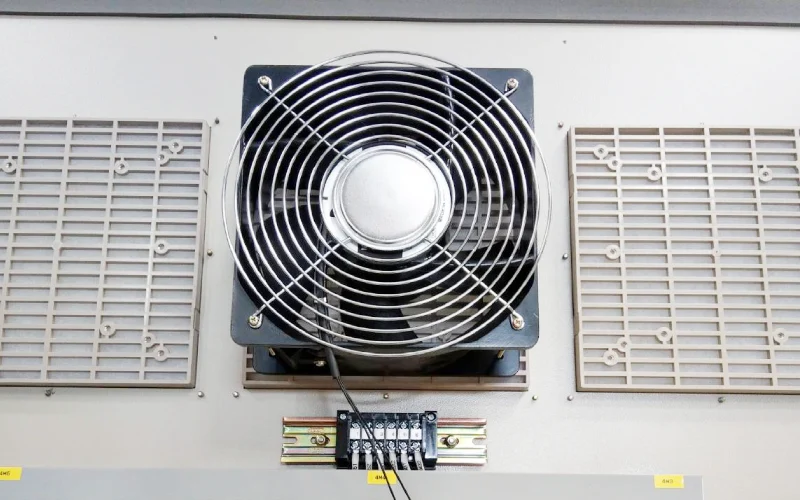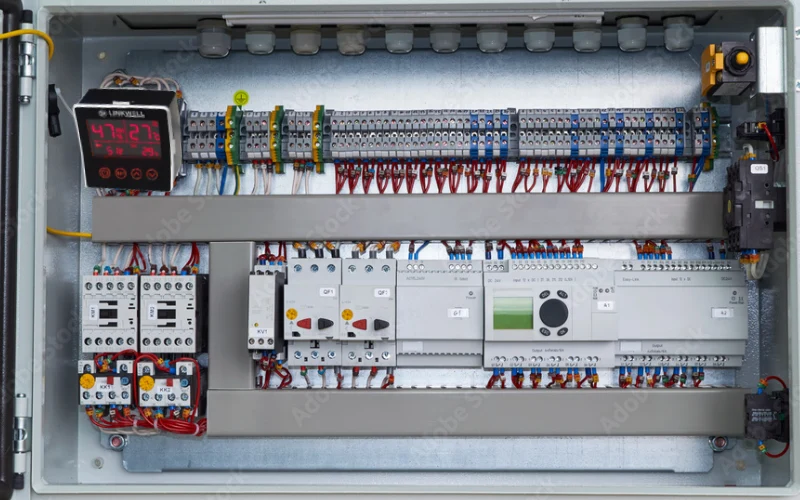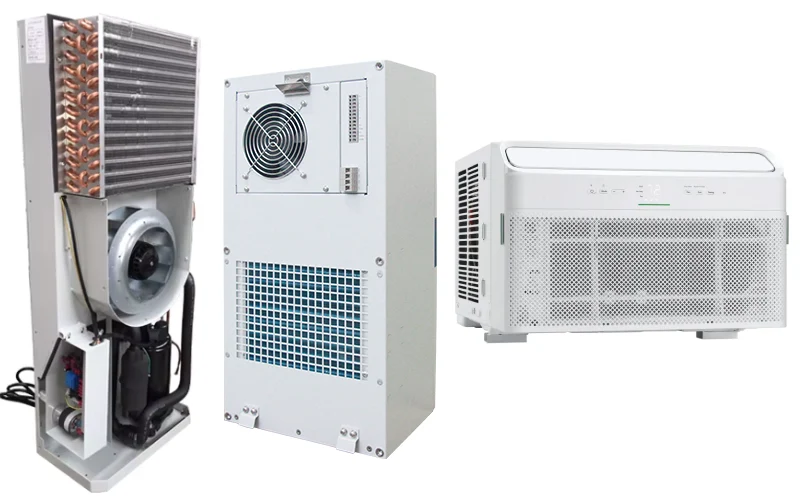You might wonder, what is Low Voltage in electrical systems? Several safety codes define it differently. Here’s a quick look:
| Standard | Voltage Range |
|---|---|
| IEC 61140:2016 | 0–1000 V AC, 0–1500 V DC |
| IEC 60038 | 50–1000 V AC, 120–1500 V DC |
| BS 7671 | >50 V AC, >120 V DC up to 1000 V AC/1500 V DC |
| US NEC | Up to 49 V |
Knowing these standards helps you pick the right equipment and keep your space safe. Linkwell brings decades of expertise and meets strict certifications like UL 508A and IEC 61439, so you get reliable low-voltage solutions for every project.
Key Takeaways
- Low voltage systems operate safely at up to 1,000 volts AC or 1,500 volts DC, making them ideal for everyday applications like lighting and appliances.
- Understanding safety standards is crucial. Always check that your low voltage equipment meets the right safety codes to prevent accidents.
- Regular maintenance and inspections of low voltage systems help catch issues early, ensuring safety and reliability in your electrical setup.
- Low voltage systems enhance energy efficiency, leading to lower electricity bills and a reduced environmental impact.
- Choosing low voltage solutions simplifies installation and maintenance, making them a smart choice for homes, offices, and factories.
What Is Low Voltage
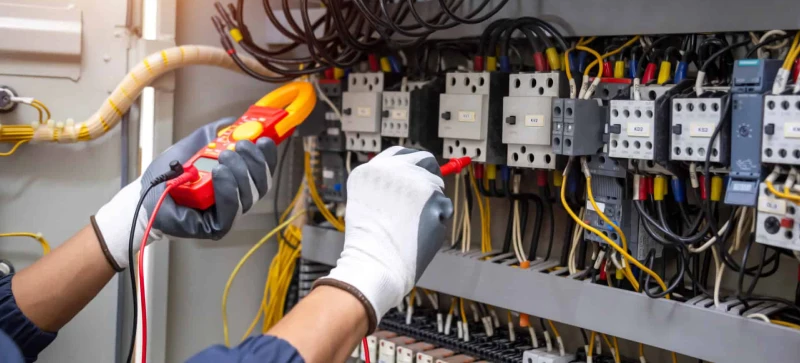
When you start learning about electrical systems, one of the first questions you might ask is, what is low voltage? This term pops up everywhere, from home wiring to industrial machines. You see it on labels, in manuals, and even in safety warnings. But what does it really mean for you?
Voltage Ranges
Let’s break down what is low voltage by looking at the numbers. Different organizations set their own rules, but most agree on the basics. Low voltage covers systems that run at up to 1,000 volts for alternating current (AC) or 1,500 volts for direct current (DC). Anything above that moves into medium or high voltage territory.
Recommended products
Here’s a simple table to help you see where low voltage fits:
| Voltage Classification | Voltage Range |
|---|---|
| Low Voltage | 50 volts or less |
| Medium Voltage | 51 to about 1,000 volts |
| High Voltage | 1,000 volts and above |
You might wonder, what is low voltage in your daily life? Most of the things you use at home or work—like lights, computers, and small machines—run on low voltage. These systems are everywhere because they are safer and easier to manage.
Let’s look at how different places use low voltage:
| Category | Voltage Range | Typical Applications |
|---|---|---|
| Residential | Up to 1,000 volts | Household appliances, lighting, small offices |
| Commercial | Up to 1,000 volts | Lighting systems, consumer electronics |
| Industrial | Up to 1,000 volts | Small industrial setups, machinery |
You see, what is low voltage is not just a technical question. It’s about the systems you use every day. Low voltage makes your home safer, keeps your office running, and powers machines in factories.
- Low voltage systems operate at nominal voltages up to 1,000 volts AC or 1,500 volts DC.
- You find these systems in lighting, appliances, and machinery in all kinds of buildings.
If you ever ask yourself, what is low voltage, just remember: it’s the safe, manageable power that runs most of your world.
Safety Standards
Now, let’s talk about why safety matters so much with low voltage. You might think, “It’s just low voltage, so it’s always safe.” That’s not true. Even low voltage can cause harm if you don’t follow the right rules.
Many groups set safety standards for low voltage systems. Some of the most important ones include:
- IEC (International Electrotechnical Commission)
- CE (European Standards)
- UL (Underwriters Laboratories)
- NEMA (National Electrical Manufacturers Association)
- ANSI (American National Standards)
- VDE (German Standards)
- DIN (German Industrial Standards)
- NF (French Standards)
- JIS (Japanese Industrial Standards)
- BS (British Standards)
- ASTM (American Society for Testing and Materials)
- AFNOR (French Standardization Association)
These standards tell you how to install, test, and maintain low voltage equipment. They help you avoid accidents and keep your systems running smoothly.
Tip: Always check that your equipment meets the right safety standards before you install or use it. This helps protect you and everyone around you.
Here’s how safety standards shape what you do with low voltage systems:
| Step | Description |
|---|---|
| Stay Informed | Keep up-to-date with the latest codes and regulations. |
| Conduct Safety Inspections | Regularly check installations to ensure they comply with safety standards. |
| Provide Documentation | Maintain detailed records of all work performed to demonstrate compliance. |
You should also use lockout and tag-out procedures. This means you lock switches and label them before working on any equipment. These steps help prevent shocks, arc flashes, or short circuits.
Regular maintenance is key for low voltage systems. Over time, wires and parts can wear out. If you skip inspections, you might miss hidden problems that could cause failures when you least expect them.
So, what is low voltage? It’s more than just a number. It’s a set of rules, habits, and tools that keep your electrical systems safe and reliable.
Low Voltage Systems
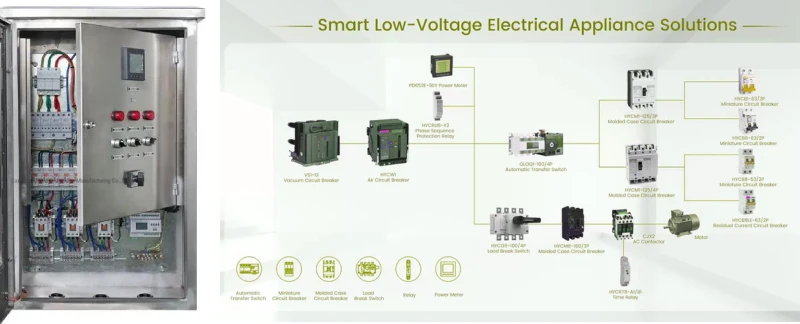
Applications
You see low voltage systems everywhere. They make your home, office, and factory safer and more efficient. In residential buildings, low voltage wiring powers lighting, security, and communication. You get energy-efficient lights, smart controls, and easy-to-install security systems. Here’s a quick look at common low voltage applications in homes:
| Application Type | Description |
|---|---|
| Lighting Systems | Energy-efficient and versatile, allowing for dimming and smart controls. |
| Security Systems | Easier installation and integration with home automation systems. |
| Communication Systems | Includes internet connections, telephones, intercoms, and audiovisual equipment with low power consumption. |
You also find low voltage systems in telecommunications, networking, audio and video systems, and home automation. These low voltage devices help you save energy and keep your home connected.
In commercial and industrial settings, low voltage systems do even more. You rely on alarm systems to protect buildings, audio/video systems for communication, and HVAC control systems for heating and cooling. Low voltage lighting and computer networks keep your workspace running smoothly. Telephone networks and low voltage control systems help you manage everything from security to automation.
- Alarm systems
- Audio/video systems
- HVAC controls
- Lighting
- Computer networks
- Telephone networks
Low voltage distribution systems make it easy to organize and protect all these devices.
Linkwell Products
You want your low-voltage electrical system to be safe, reliable, and efficient. Linkwell offers solutions that fit every need. Their step down transformer uses heat-resistant copper windings and a laminated silicon steel core. This design reduces energy loss and keeps your low voltage applications running smoothly. You can install these transformers in electrical cabinets, telecom racks, and industrial panels. They are compact and rated higher than the actual load for extra safety.
| Specification | Details |
|---|---|
| Windings | Heat-resistant copper windings |
| Core Material | Laminated silicon steel sheets |
| Efficiency | Reduced energy loss from eddy currents and hysteresis |
| Applications | Low-voltage electrical cabinets, telecom racks, industrial panels |
| Design | Built to be compact and efficient, rated two to three times higher than actual load |
Linkwell’s electrical control panel gives you peace of mind. It meets UL 508A, NEC, and CE standards. You get protective grounding, circuit isolation, and circuit breakers. Emergency stops let you shut down operations quickly if needed.
| Feature | Description |
|---|---|
| Compliance | Designed to UL 508A, NEC, and CE standards. |
| Protective Grounding | Ensures safe electrical grounding to prevent shock hazards. |
| Circuit Isolation | Isolates circuits to prevent faults from affecting the entire system. |
| Circuit Breakers | Protects against overloads and electrical faults. |
| Emergency Stops | Provides a quick way to shut down operations in case of an emergency. |
You also get electrical power distribution boxes that organize low voltage wiring and protect your low voltage devices. These boxes keep your low-voltage systems safe from overloads and short circuits. With Linkwell, you get low-voltage power that supports your daily needs and keeps your systems running efficiently.
Tip: Choose Linkwell products for reliable low-voltage wiring, safe low voltage transformers, and organized low voltage distribution systems. You get solutions that work for every low voltage application.
Benefits of Low-Voltage Systems
Safety
You want your electrical system to keep you safe. Low voltage systems help you do just that. When you use low voltage wiring in your home or office, you lower the risk of electrical hazards. The wires are more durable, and the voltage is less likely to cause serious injuries. You can touch most low voltage devices without worrying about a dangerous shock.
Here’s a quick look at how low voltage compares to high voltage when it comes to safety:
| Aspect | High Voltage | Low Voltage |
|---|---|---|
| Operating Voltage | Higher, increasing shock risk | Lower, reducing shock risk |
| Power Usage | Higher, increasing fire hazards | Lower, minimizing fire hazards |
| Common Applications | Industrial, more hazardous | Consumer electronics, safer |
You use low voltage systems in everyday devices like computers and cell phones. These systems operate at lower power levels, so you face less risk of severe electrical injuries. You still need to follow safety rules, but low voltage is generally less dangerous.
- Low voltage systems reduce electrical hazards.
- They enhance cybersecurity, protecting both your physical and digital environment.
- You get safer lighting, security, and communication systems.
Tip: Always check your low voltage wiring and devices for damage. Regular inspections help you catch problems before they become serious.
Efficiency
You want your electrical system to work efficiently. Low voltage systems help you save energy and money. When you use low voltage, you manage power better and reduce waste. These systems use less electricity, which means lower bills and less impact on the environment.
- Low voltage systems improve energy management and reduce power consumption.
- They keep users and equipment safe by minimizing electrical hazards.
- You can connect advanced technologies, making your operations smarter and more efficient.
Here’s how low voltage systems boost efficiency in industrial settings:
- The demand for low voltage drives is rising, helping you cut operational costs.
- You improve process efficiency across different industries.
- You control motor speed, optimize power use, and minimize waste.
You see these benefits in homes, offices, and factories. Low voltage systems make your life easier and your work more productive. You get reliable performance, safer equipment, and smarter technology—all with lower voltage.
Low Voltage vs High Voltage
Key Differences
When you look at electrical systems, you see two main types: low voltage and high voltage. Each one has its own set of rules for safety, installation, and maintenance. Let’s break down the main differences so you can see which one fits your needs.
| Aspect | Low Voltage | High Voltage |
|---|---|---|
| Installation Safety | Less stressful and dangerous | Poses risks of electrical fires and shocks |
| Installation Complexity | Can be installed by any skilled electrician | Requires specialized training and knowledge |
| Material Safety | Often designed with fire-resistant materials | Higher risk of overheating and fire hazards |
Low voltage systems are much safer for you to work with. You do not need special training to handle most low voltage wiring. High voltage systems, on the other hand, can be dangerous. They need experts who know how to manage the risks. You also find that low voltage systems use materials that resist fire, making your setup even safer.
When it comes to maintenance, low voltage systems save you money. They are easier to install and keep running. You spend less time and money on repairs. High voltage systems cost more to maintain because they are complex and need strict safety checks.
Tip: If you want a system that is easy to install and maintain, low voltage is the way to go.
Use Cases
You see low voltage systems in many places. They power your lights, control your heating and cooling, and keep your data centers running. Here are some common uses:
- Industrial automation, like conveyor belts and robotic arms
- Power distribution for managing electrical loads
- HVAC systems that control temperature
- Charging stations for electric vehicles
- Centralized lighting in commercial buildings
- Load switching and energy management in data centers
Linkwell offers products that make low voltage work for you. Their step down transformers convert high voltage to safe, usable levels. You get control panels that organize your circuits and keep everything running smoothly. Power distribution boxes protect your equipment from overloads and short circuits. Linkwell’s panel accessories, like ventilation fans, heaters, thermostats, terminal blocks, and wiring ducts, help you build a reliable low voltage system for any industrial or automation project.
Low voltage transformers from Linkwell play a big part in automation. They make sure your machines get the right voltage, which keeps your equipment safe and efficient. You can customize these products for your control cabinets, telecom stations, or power distribution needs. This flexibility means you get lower costs, stable quality, and fast delivery.
If you want a system that is safe, cost-effective, and easy to maintain, low voltage is the smart choice. You get peace of mind and reliable performance, whether you are working in a factory, office, or data center.
Low voltage systems give you safer, more efficient electrical installations. You get enhanced safety, lower energy bills, and flexible solutions for communication and automation.
- They work well in homes, offices, and factories.
- You can trust Linkwell for reliable products that meet strict standards.
- The market for low voltage keeps growing as smart technology spreads.
If you want peace of mind and better performance, choose low-voltage solutions for your next project.
FAQ
What is the main advantage of using low voltage electricity at home?
You get safer wiring and devices. Low voltage electricity reduces the risk of shock and fire. You can install more energy-efficient lighting and smart systems. It makes your home safer for everyone, especially kids and pets.
Can low voltage electricity power large appliances?
No, low voltage electricity works best for lighting, security, and electronics. Large appliances like ovens or dryers need higher voltage. You should always check the requirements before plugging in any device.
How do I know if my system uses low voltage electricity?
Look at your circuit breakers or device labels. If you see numbers like 12V, 24V, or 48V, you have low voltage electricity. Most homes use both standard and low voltage for different needs.
Why do factories use low voltage electricity for automation?
Factories use low voltage electricity to keep machines safe and efficient. It helps protect sensitive equipment and reduces downtime. You get better control over automation and lower maintenance costs.
Do I need special training to work with low voltage electricity?
You do not need advanced training for basic low voltage electricity tasks. Always follow safety rules and use the right tools. For complex jobs, call a licensed electrician to avoid risks.





